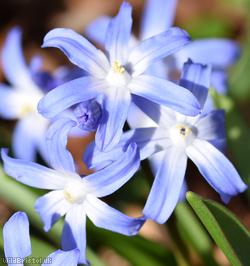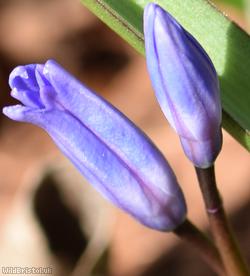Glory-of-the-snow - Scilla forbesii
Favourite Photos
Species Description
Widespread but scattered throughout the UK. Habitat includes: gardens, parks, allotments, churchyards etc. Growing habit: Perennial. Flowers: March to April. Other names include: Forbes's Glory-of-the-snow, Chionodoxa siehei (old name).
Stace 4:
Scilla forbesii (Baker) Speta (Chionodoxa forbesii Baker, C. luciliae auct. non Boiss.) - Glory-of-the-snow.
Stems to 30cm (often much less) , mostly with 4-12 flowers; perianth-tube 3-5mm; perianth-lobes more or less patent, 10-15mm, white for proximal about 1/3, bright blue for distal about 2/3; (2n=18). Neophyte-naturalised; much grown in gardens, well naturalised from seeds where neglected or thrown out; scattered in Britain and Isle of Man, mainly South England; West Turkey. The commonest cultivated and naturalised species; frequently misnamed S. luciliae.
Key:
- perianth blue with a white centre zone (and white filaments)
- stems mostly with 4-12 flowers; perianth bright blue distally





